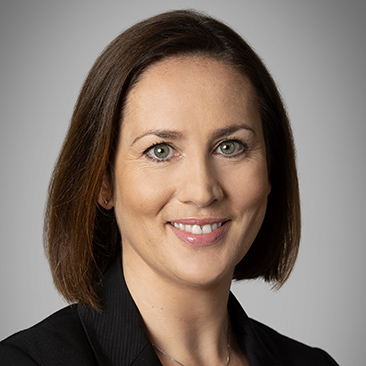The High Court in London handed down judgment on Part C of the Lehman Waterfall II Application on 5 October 2016.
The judgment examines the extent of creditors’ entitlements to Default Rate interest on debts arising under ISDA Master Agreements governed by English law and New York law. As some £4.4 billion of LBIE’s admitted claims arise under ISDA Master Agreements and the debts were outstanding for more than five years, this judgment will materially influence the amount of money which must be applied in satisfaction of creditors’ entitlements to statutory interest.
The Application comprises one part of the ongoing dispute regarding the distribution of the estimated surplus of over £7 billion in the estate of Lehman Brothers International (Europe) (in administration) (LBIE). LBIE entered administration on 15 September 2008 and has since paid its unsecured creditors 100p for every £1 owed.
To put the wider importance of the issues in context, the judgment notes that, according to statistics compiled by the Bank of International Settlements, as at the end of December 2014 the total notional amount of over-the-counter derivatives in existence was US$630 trillion.
The ‘Default Rate’ is defined in the ISDA Master Agreements as: “a rate per annum equal to the cost (without proof or evidence of any actual cost) to the relevant payee (as certified by it) if it were to fund or of funding the relevant amount plus 1% per annum.”
Mr Justice Hildyard’s findings in connection with the meaning of the “cost … of funding the relevant amount” and the identity of the “relevant payee” are summarised below (albeit that the terms of the Order have not yet been finalised).
Further, on 24 August 2016 the High Court in London handed down judgment on certain supplemental issues arising from the Waterfall IIA and IIB judgments. The supplemental issues relate to the calculation of statutory interest and currency conversion claims and to the releases given under the CRA and CDDs. A summary of David Richards LJ’s judgment follows the summary of the IIC judgment below.
The IIC judgment also considers the position under similar agreements governed by German law, although those issues are not covered by this update.
IIC – scope of the ‘cost of funding’ for the Default Rate
1. The Judge held that, in certifying the “cost of funding”, only the cost of borrowing the relevant amount under a loan transaction may be used, whether this is the actual cost where a party does enter into such transaction, or the hypothetical cost where it does not.
2. “Cost of funding” therefore excludes other costs and expenses including:
(a) the cost of equity funding;
(b) the cost of funding the relevant payee’s assets;
(c) the costs associated with carrying a defaulted LBIE receivable on its balance sheet;
(d) the actual or asserted cost to the relevant payee of funding a claim against LBIE; or
(e) any other financial detriment or consequential loss.
3. The cost of funding should not exceed what the borrower knows to be or which could be available to it in the circumstances pertaining to its business, having regard to the permitted object of the borrowing (to cover the relevant amount).
IIC – challenging the certificate
4. The certified Default Rate may be challenged on the following grounds:
(a) irrationality;
(b) lack of good faith;
(c) manifest numerical or mathematical error; and
(d) that the certified cost of funding does not fall within the scope of ‘cost of funds’, as described above.
5. In challenging a certificate, the challenging party bears the burden of proof, on the balance of probabilities.
IIC – identity of the “relevant payee”
6. Only LBIE’s original contractual counterparty can be the “relevant payee” for purposes of the definition of the “Default Rate”. The “relevant payee” cannot encompass any third party to whom the right to payment under s 6(e) of the ISDA Master Agreements has since transferred or assigned under s 7 of the Agreements.
7. Accordingly, it is the cost of funds of LBIE’s original counterparty that must be applied, even if that original counterparty sold the claim years ago: “the transferee is entitled to the tree planted by the transferor and such fruit as had grown and would grow on it when transferred, and not to fruit of a different variety or quantity which might have grown had the transferee planted the tree.”
8. Hildyard J noted that this conclusion is consistent with well-established principles of law to the effect that an assignee cannot recover more against the debtor than the assignor could have done.
IIA – supplemental Issue 1(A)
9. At the end of his judgment, Hildyard J also addressed a supplemental issue raised in Waterfall IIA. The question was essentially whether a creditor can claim statutory interest at the ISDA Default Rate if the ISDA was only closed out after LBIE entered administration.
10. For these purposes, he held that the answer is ‘yes’ and the phrase “the rate applicable to the debt apart from the administration” in Insolvency Rule 2.88(9) does include, in the case of a provable debt that is a close-out sum under a contract, a contractual rate of interest that only begins to accrue after the close-out sum became due and payable as a result of action taken by the creditor after LBIE entered into administration.
Waterfall IIA and IIB supplemental issues
The Waterfall IIC judgment follows Lord Justice David Richards’ judgment on the supplemental issues arising from Waterfall IIA and IIB, which was handed down on 24 August 2016. In his judgment, David Richards LJ held that:
1. Where contractual interest on a future or contingent debt is payable only upon an event or contingency occurring after the date of administration, such interest is payable on a currency conversion claim arising from such a debt, strictly subject to: (i) that event or contingency occurring and (ii) the terms of the contract.
2. In order to calculate the amount of statutory interest that would be payable on a contingent or future debt ‘at the rate applicable apart from the administration’ (as opposed to the 8% simple interest), the interest runs at nil% for the period from the administration date to the date on which interest starts to accrue under the contract (which is likely to be the close-out date), and then at the contract rate from that date till payment. For the purposes of comparing the contract rate to 8% interest, the comparison is of the whole period from the administration date to the payment date on an aggregate basis, so: (i) 8% simple from the administration date to payment, compared to (ii) nil% from the administration date to close-out plus the contract rate from the close-out date to payment.
3. A currency conversion claim cannot arise from the discharge of a debt by way of set-off under Insolvency Rule 2.85(3).
4. A non-provable claim to interest on a currency conversion claim cannot be reduced by interest paid to the creditor on its proved debt.
5. If a creditor were entitled to make a claim for non-provable interest on a proved debt, where its full entitlement to contractual interest in the absence of the administration had not been satisfied, the claim would be released by the terms of the CRA and the CDDs. Accordingly, the administrators would not be directed to pay such interest.
6. If a creditor is entitled to claim non-provable interest on a currency conversion claim, any such claim will fall within the release provided by the CRA but not within the release provided by the CDDs.
Comment
The Waterfall IIC judgment and the supplemental judgment on IIA and IIB address several issues that are of significant importance both in the context of LBIE’s administration and, in the case of IIC, also more generally as to the interpretation of ISDA master agreements in the multi-trillion Dollar OTC derivative market.
The UK Supreme Court is due to hear the appeal of the Waterfall I judgment later this month, and the Court of Appeal is due to hear the appeals of the Waterfall IIA and IIB judgments in April 2017. Our prior updates on those judgments are available here and here.
Weil acts for Lehman Brothers Holdings Inc., which has an interest in the Wentworth joint venture. The team was led by London Restructuring partner Mark Lawford, assisted by Litigation associate Frankie Cowl.
Weil has represented Lehman Brothers Holdings Inc. since its historic bankruptcy filing in September 2008. As part of the ongoing representation, we continue to field a multi-disciplinary global team, led in London by Adam Plainer.
Contributor(s)


More from the Weil European Restructuring Blog
This website is maintained by Weil, Gotshal & Manges LLP in New York, NY © 2020 Weil, Gotshal & Manges LLP, All Rights Reserved. The contents of this website may contain attorney advertising under the laws of various states. Quotation with attribution is permitted. This publication is provided for general information purposes only and is not intended to cover every aspect of the purpose for the law. The information in this publication does not constitute the legal or other professional advice of Weil London or the authors. The views expressed in this publication reflect those of the authors and are not necessarily the views of Weil London or of its clients. These materials may contain attorney advertising. Prior results do not guarantee a similar outcome.
















